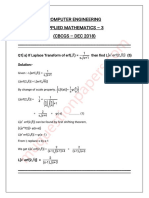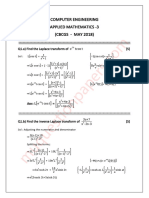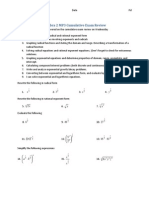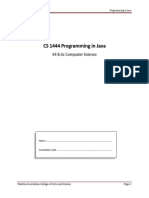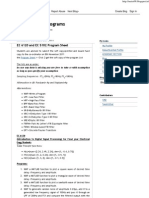0% found this document useful (0 votes)
43 views10 pagesMerkle Tree
A Merkle Tree, also known as a hash tree, is a data structure used in blockchain technology where each leaf node contains the hash of a data block and non-leaf nodes contain hashes of their child nodes. It enables efficient verification of transaction integrity and membership through a hierarchical structure, allowing for quick comparisons and reduced data transfer requirements. The document discusses various aspects of Merkle Trees, including their construction, importance in blockchain, proof of membership, and advantages over traditional data structures.
Uploaded by
Madhura KanseCopyright
© © All Rights Reserved
We take content rights seriously. If you suspect this is your content, claim it here.
Available Formats
Download as PDF, TXT or read online on Scribd
0% found this document useful (0 votes)
43 views10 pagesMerkle Tree
A Merkle Tree, also known as a hash tree, is a data structure used in blockchain technology where each leaf node contains the hash of a data block and non-leaf nodes contain hashes of their child nodes. It enables efficient verification of transaction integrity and membership through a hierarchical structure, allowing for quick comparisons and reduced data transfer requirements. The document discusses various aspects of Merkle Trees, including their construction, importance in blockchain, proof of membership, and advantages over traditional data structures.
Uploaded by
Madhura KanseCopyright
© © All Rights Reserved
We take content rights seriously. If you suspect this is your content, claim it here.
Available Formats
Download as PDF, TXT or read online on Scribd
/ 10





































































